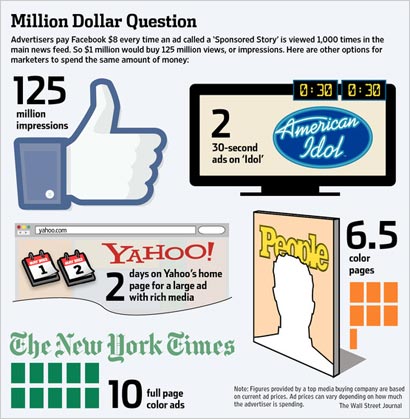Commentary
Huh?
- by George Simpson , Featured Contributor, May 4, 2012
Within a few minutes, these two items hit my mailbox the other day. See if you are struck by the same irony I was:
1) According to a study presented earlier this week at the Pediatric Academic Societies, there is a link between recognition of nationally televised alcohol ads and underage drinking initiation and binge drinking. Said a researcher in a release, "Our findings of high levels of familiarity with alcohol ads demonstrate that underage youth still frequently see these ads. While this study cannot determine which came first -- the exposure to advertising or the drinking behavior -- it does suggest that alcohol advertising may play a role in underage drinking, and the standards for alcohol ad placement perhaps should be more strict."
2) A totally different digital industry study demonstrates “the perils of relying on click-throughs for measuring the performance of display ad campaigns... it highlights why the viewable impression, is significantly more meaningful than the unvalidated impression... [and it] shows why other non-click metrics of engagement, such as interaction or hovering, may be much more important in evaluating campaign performance than the click ever was...."
Putting aside the moral issue of minors seeing alcohol commercials on TV (when you are a teen, your brand of choice is whatever you can get your hands on), note the utter simplicity of the argument that TV advertising works (even if inadvertently), versus the gobbledygook cooked up to try and convince someone that digital ads are effective.
And therein lies the problem for the online ad industry. You can rant and rave all day long about the shift in media use to digital platforms and how interactivity enhances the prospects for conversions (or some other brand metric movement) but it takes you a thousand words, many of them indecipherable, to claim some nth of a percentage improvement in anything and everything from awareness to "engagement" (and if someone mentions that goddamned funnel again, I am going to have a seizure) leaving buyers not only exhausted but still skeptical.
Meanwhile a marketer runs a national TV commercial on Sunday night, and on Monday product moves off the shelves. Seems not to matter that the size of that TV audience is a fraction of what it was years ago and costs far more than it should. And it is not necessarily a more efficient buy (at least one company has shown that for national advertisers, 90% of impressions and dollars are reaching only 40% of their target audience). But it is simply a token of faith in our business that TV advertising works -- maybe too well, according to the opening paragraph.
Take this chart that ran with a WSJ story skeptical about the effectiveness of Facebook advertising: Any idiot knows what two ad spots are on a TV show, what ad pages are in a newspaper or a magazine -- but what in hell am I getting when I pay the same money for 125 million "impressions"?

I promise you if and when Facebook, or any other online entity, tries to tie impressions to sales, the explanation will sound like a routine from a Monty Python sketch.
In some ways folks in the online business think that obfuscation is cool; after all, it is the same language that their VCs and bankers use. They only kid themselves.
One could argue that if you peel back the language TV uses to "prove" it moves product (or awareness, favorability, blah, blah, blah) it is not more valid than the hieroglyphics that are common to the online industry; but the TV business has a 70-or-so-year head start. Oh, and those Monday sales.
In my beach house, there is a small painted wooden sign over the kitchen sink. It reads: Simplify.
Word(s) to live by.



"Traditional media" is not dead. Digital media is effective, but that does negate the effectiveness of traditional forms of media, especially with certain demos.
While newspaper may not be very cost efficient for many, it does still get results. Case in point, I have a client who ran a print ad in the local Sunday paper, on Monday they had 12 applications from that one ad.
OK
Brilliant article, George! We have that old saying, "If it sounds too good to be true, it probably is." We should add, "If the explanation is too complicated for anyone but the explainer to understand (or if it sounds like a "Monty Python" sketch), it's probably a fantasy."
The new media fallacy I love is how often big numbers are used rather than useful numbers.
Millions of this, hundreds of millions of that..."full of sound and fury signifying nothing".
There's tremendous value in new media. But a great many communication needs are a poor fit.